Download the July 14, 2024 CUR eNews here.
In this issue, you’ll find information on
- Scholars Transforming through Research (STR)
- ConnectUR
- AURA Award
- Membership Renewal
- STEMM Opportunity Alliance
- and more
Download the July 14, 2024 CUR eNews here.
In this issue, you’ll find information on
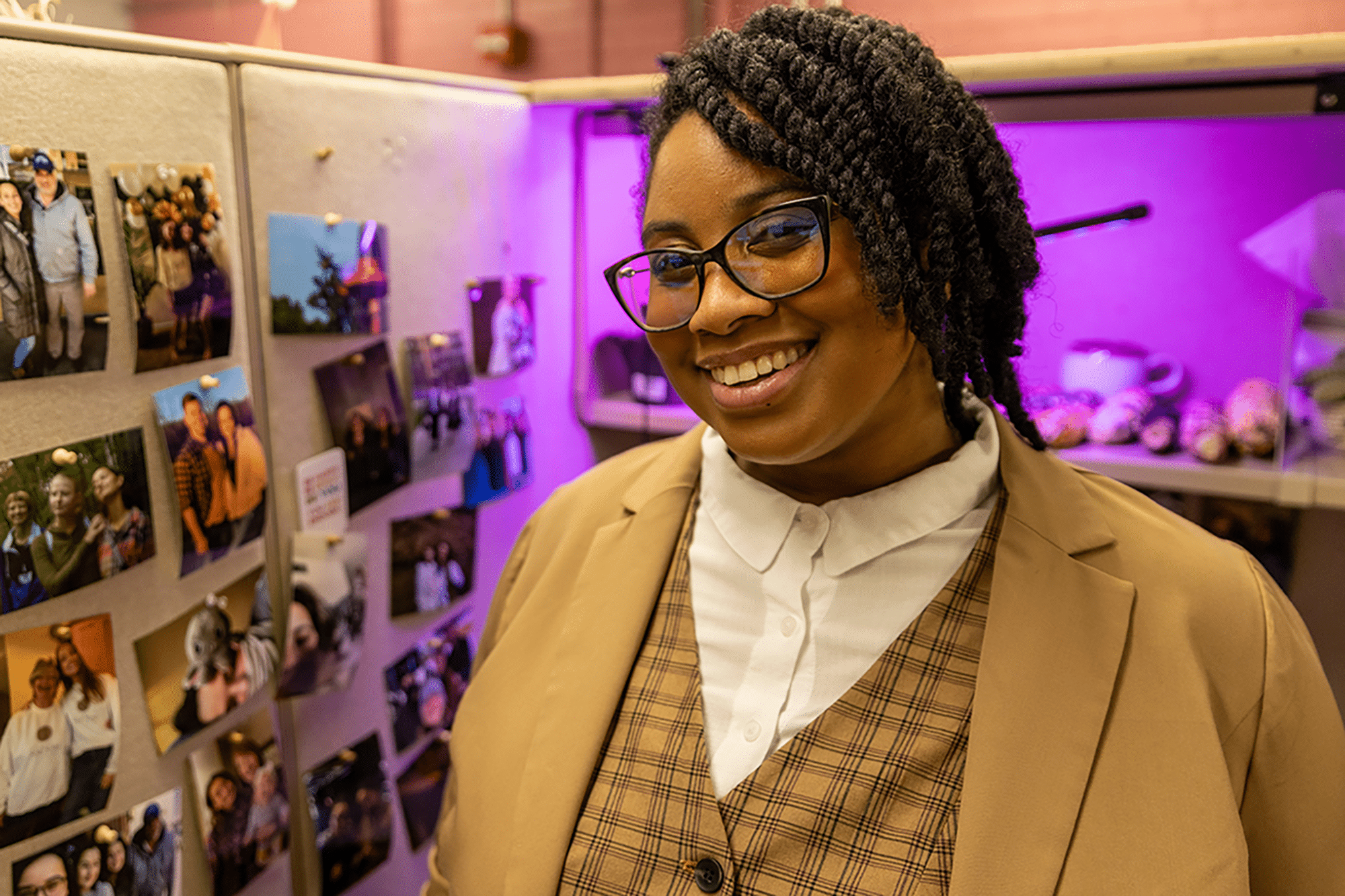
Danny Davis is on a quest to crossbreed the most nutritional, tastiest corn possible. The senior plant sciences major from Shakopee, Minnesota, came to the University of Missouri eager to combine her interest in DNA with research that improves the lives of both farmers and consumers.
Davis’ involvement in Mizzou’s Maximizing Access to Research Careers (MARC) and Initiative for Maximizing Student Development (IMSD) programs helped her discover an on-campus corn genetics lab run by Sherry Flint-Garcia, a research geneticist with the United States Department of Agriculture (USDA). Davis said the research skills she’s gained under Flint-Garcia’s mentorship have been the highlight of her Mizzou experience.
“I have learned so much from Sherry. One of the main goals of our research lab is to crossbreed two types of very good corn to make the resulting offspring even better,” Davis said. “By analyzing the DNA of different types of corn, we can learn what the genotypes say about how it will grow, how much water to use, how it will smell, look, taste, and what it can be used for. Our ultimate goal is to help small farmers by offering them a tastier and more nutritious product to sell to businesses and consumers so that they can increase their profits without having to expand their land or compete against major corporations.”
Davis’ efforts in Flint-Garcia’s lab ultimately will help small businesses in the Midwest, including Yoli Tortilleria, a corn tortilla factory in Kansas City, Missouri, and Wood Hat Spirits, a distillery in New Florence, Missouri.
“On the corn tortilla side, many of the existing products on the market are made from commercial yellow dent corn and aren’t very tasty, so there is a lot of room for improvement,” Davis said. “And on the whiskey side, there is only so much you can do to tweak the aging process or oak of the barrel. At some point you’ve got to go back to basics and change what you are making the whiskey out of in the first place. Increasing the quality of the corn can be the difference between whiskey that goes down harder with more of a burn compared to whiskey that goes down smoother with a more complex melody.”
Davis and her lab mates recently hosted a corn tortilla taste-testing event at Mizzou to get feedback from people on which types of corn make the tastiest tortillas. The feedback may eventually help farmers in Missouri plant new varieties of more flavorful corn that can withstand Missouri’s weather conditions and climate.
Flint-Garcia refers to Davis as the lab’s ‘social butterfly,’ noting her persistence, assertiveness and ability to collaborate well with others as attributes that will help her succeed as her career progresses.
“Danny is never afraid to introduce herself, ask questions, show her personality and communicate her goals and vision,” said Flint-Garcia. “Sometimes scientists tend to be more introverted, and her ability to learn new things and work well with others makes her a valuable team member wherever she ends up.”
During her time working in Flint-Garcia’s lab, Davis was involved in analyzing and crossbreeding heirloom corn primarily from South America and southern Missouri. While Davis is set to graduate from Mizzou’s College of Agriculture, Food and Natural Resources this spring, Flint-Garcia’s lab recently earned grant funding from the USDA that will allow the lab to access and study 1,000 heirloom corn varieties originating from across the United States.
“Now that the lab has corn from across the United States to work with, the sky is the limit,” Davis said. “It warms my heart to know that our research has been meaningful, and positively impacting the people that our data affects is a rewarding experience.”
Davis, who will soon go to graduate school and pursue a doctoral degree in plant sciences, credits the support and mentorship she has received at Mizzou for all the opportunities she’s been able to take advantage of.
“Being a part of MARC and IMSD helped me find paid research opportunities, support and mentorship, and hands-on lab work that is geared toward helping ordinary people out in the community,” Davis said. “All of the people in the Office of Undergraduate Research, especially Brian Booton, Sarah Humfeld and Linda Blockus, and my lab mentor, Sherry Flint-Garcia, have been so welcoming and encouraging to me throughout my collegiate journey. Mizzou has supported me, and I feel lucky I get to support farmers in return.”
Written by: Brian Consiglio for The University of Missouri; used with permission. Find the original article here
Download the June 16, 2024 CUR eNews here.
In this issue, you’ll find information on

Dr. Karina Elizabeth Vázquez, Community-Based Learning (CBL) Director in the Department of Latin America, Latino, & Iberian Studies (LALIS) at the University of Richmond, has been selected as the 2024 Council on Undergraduate Research (CUR) – Arts and Humanities Faculty Mentor Awardee.
Vázquez views her mentor role as an opportunity to work with students in exciting and challenging processes of merging their intellectual interests with their life aspirations. In her current role as LALIS CBL Director, she coordinates educational initiatives and community translation and interpretation projects that support bilingualism, Hispanic/Latinx, and immigrant communities through collaborative projects to promote access to culture, education, health services, and more. She continues to see students as multifaceted individuals who want to explore and contribute on their terms and believes that her role as a mentor is to strengthen their self-positioning through process-based advising. Her success is proven through the growth of her program at the University of Richmond. Under her direction, the CBL program has become a cornerstone of the curriculum in her department, allowing her students to engage in 3-5 academic community projects each semester, complete numerous individual translation projects, write articles, give presentations, serve 12-15 community partners a semester, and her students provide approximately one thousand hours of community service/engagement each year.
According to Jennifer Jones Cavenaugh, Dean of the School of Arts and Sciences at the University of Richmond, “Karina’s unique approach of combining CBL with professional development clearly has resulted in positive student research outcomes such as publications. Perhaps more importantly, though, she has made her students more culturally aware, professionally prepared, empowered, and eager contributors to the bettering of our community. This is what only the best mentors can accomplish.”
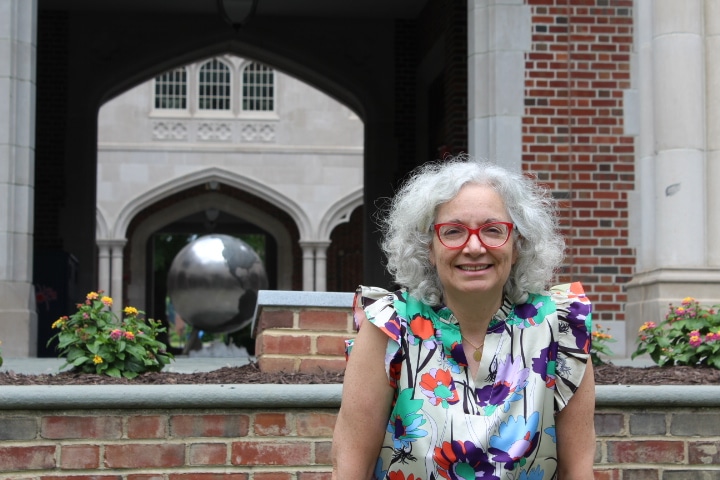
“I felt elated when I got the news about the award,” explains Dr. Vázquez. “Immediately, all the experiences working as a research mentor passed through my mind, especially when students shared how conducting research had changed and helped them to better understand their communities. I am passionate about engaging students in Arts and Humanities research that seeks to respond to key questions while addressing challenges faced by local communities. Mentoring students who are passionate about social change and helping them hone their research skills to achieve a better comprehension of how representation and power intersect through social dynamics renews my commitment to the profession.”
Dr. Vázquez continues to explain, “Publishing and presenting at conferences with students have been inspiring experiences that keep me working on re-designing courses and re-thinking my pedagogical approaches. These are wonderful opportunities for listening to students present themselves with autonomy. Recently, I have enjoyed and learned from working on literary texts re-editing projects where students must write prologues for a reading audience defined by themselves. This assignment has shown them the power of literature. Research conducted for writing the prologues and presentations became a venue for students to identify and explore urgent questions and issues that surfaced as they became aware of themselves as members of an interpretative community. Researching and writing became instances for resilience, dialogue, and critical positioning/intervention. Working with these students helps me see the world through different and renewed lenses!”
Lindsay Currie, CUR’s executive officer, stated, “Dr. Vázquez’s holistic and humanistic approach to mentoring undergraduates should be celebrated. We are excited to acknowledge her vested interest in collaborating community and education to better prepare students through empowering their research. It is also humbling to see her dedication through such a wide lens that allows her to connect with her students to help them achieve personal and professional growth.”
The CUR-Arts and Humanities Faculty Mentor Award was established in 2018 through an endowed gift by 2012 CUR Fellow Joyce Kinkead (Utah State University) to nurture undergraduate research, scholarship, and creative inquiry in arts and humanities disciplines. Vázquez will be honored at the June 11, 2024, CUR Award Celebration.

Dr. Naomi Lee, Assistant Professor in the Department of Chemistry and Biochemistry at Northern Arizona University (NAU), an NIH Early-Stage Investigator, an officer in the Army Reserves, an affiliate faculty of various STEM-related professional societies, and a member of the Seneca Nation (bear clan), has been selected as the 2024 recipient of the Council on Undergraduate Research’s (CUR) Silvia Ronco Innovative Mentor Award. This award, established in February 2022 by a gift from the Research Corporation for Science Advancement (RCSA), is in honor of CUR’s past president and current RCSA Senior Program Director, Silvia Ronco. The Silvia Ronco Innovative Mentor Award recognizes a tenure-track faculty member within ten years of their first faculty appointment who demonstrates success in chemical sciences and whose mentoring practices have supported undergraduate research.
“I am extremely honored to be selected for the Silvia Ronco Innovative Mentor awardee,” stated Lee. “One of the highlights of my career is helping students excel and reach their potential either in the classroom or laboratory. More importantly, I strive to create an inclusive environment where students feel they can express themselves in academia and research.”
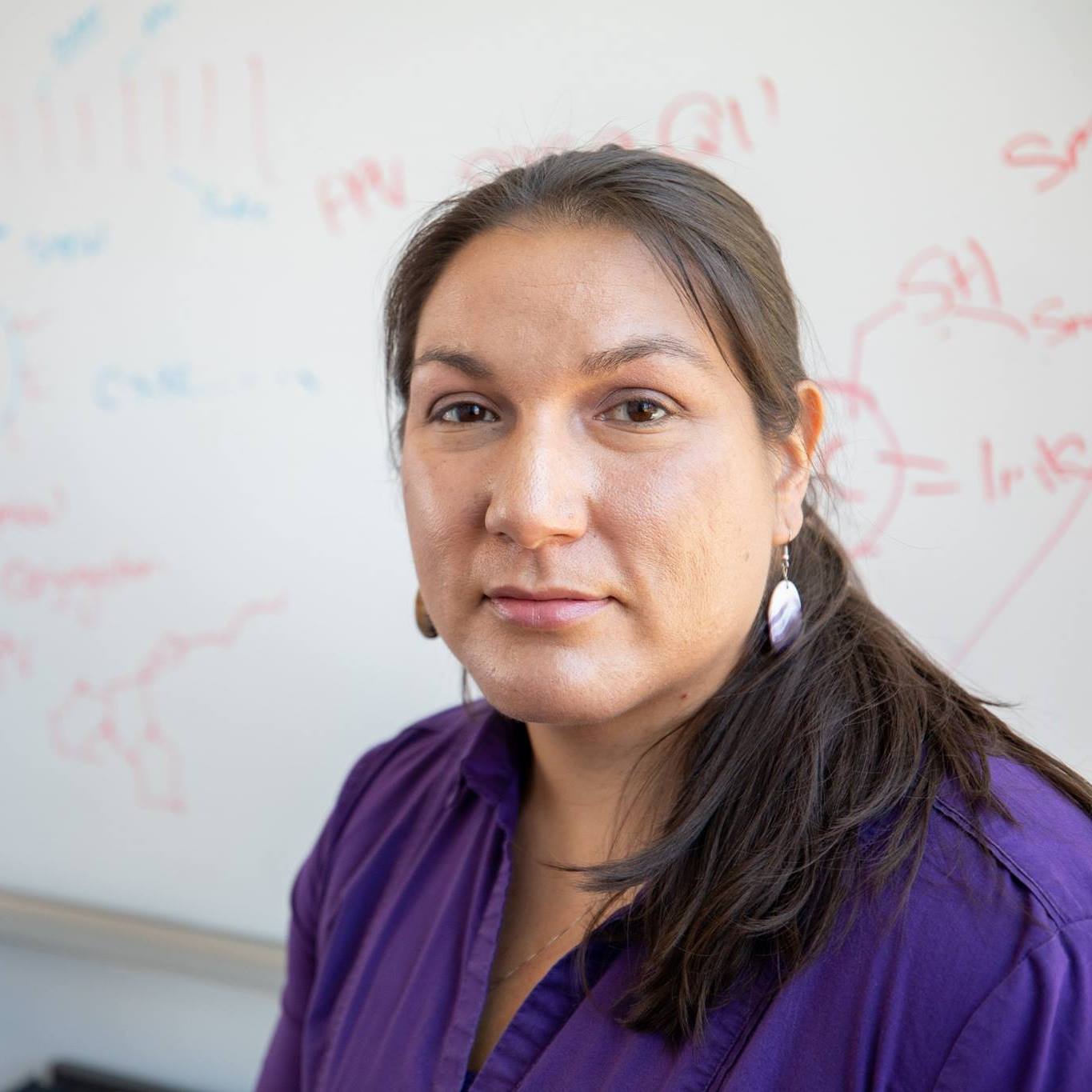
Dr. Lee has expressed that her career goal is to increase the health and welfare of Native American communities through research, STEM education, and mentoring. Through her research, she found that in 2013 NSF data detailed one Native American student graduated with a doctorate degree with a focus in organic. This likely candidate was Dr. Lee herself. After seeing the data, Dr. Lee strives to change the pattern of the future. Dr. Lee mentored hundreds of high school and undergraduate students, primarily Native American or Hispanic. Within the past five years at her current institution, Dr. Lee continued pursuing her passion by securing multiple NIH grants and foundation funding, publishing peer-reviewed articles with students as co-authors, and executing one patent and numerous culturally informed materials for her lab at NAU. Through her mentoring, Dr. Lee has been recognized on various levels across the country, including the 2018 Professional of the Year by the American Indian Science and Engineering Society, named among the Top 15 Emerging Scholars in Diverse Issue in Higher Education, and listed as one of the “Visionary Women of Rochester” by the University of Rochester.
“Dr. Lee exemplifies the spirit and dedication that the Silvia Ronco Innovative Mentor Award was created to honor. As an Assistant Professor, an NIH Early-Stage Investigator, and a devoted mentor, Dr. Lee has not only excelled in the chemical sciences but has also made significant strides in fostering an inclusive and supportive environment for undergraduate research. Her commitment to increasing the health and welfare of Native American communities through research and STEM education is truly inspiring. Dr. Lee’s achievements and her tireless efforts to mentor and guide students, particularly from underrepresented backgrounds, reflect the highest ideals of the Council on Undergraduate Research. We are proud to recognize her outstanding contributions and look forward to her continued impact on the academic and research community,” detailed Lindsay Currie, CUR Executive Officer.
Lee will be recognized at CUR’s Award Celebration on June 11, 2024.

Sidney Paulson, a senior at UW-La Crosse, stumbled upon the inspiration for an undergraduate research project during her ethnographic methods class. The inability of a group of students to coordinate a time to meet outside class due to their demanding work schedules sparked Paulson’s curiosity about the challenges faced by working students in balancing their academic and work lives.
“In that initial research for class, many more questions came up for me about what people find important in college careers and the support systems that are most beneficial,” says Paulson. “I wanted to explore that more and bring more awareness to it.”
Now, Paulson is bringing awareness about working students to the national level. She’ll present the results of her research at the National Conference on Undergraduate Research (NCUR) April 8-10, in Long Beach, California. NCUR serves as a platform for student scholars from various academic backgrounds to showcase their research endeavors. UWL has hosted NCUR twice.
Paulson’s research involved conducting an online survey targeting full-time UWL students who work at least 15 hours per week during the academic term. Subsequently, she conducted follow-up interviews with select participants to gain deeper insights into their experiences with work-life balance and their strategies for managing competing demands.
Her research comes as a growing number of students turn to working long hours during college to pay for an increasingly larger percentage of their college education. The cost of higher education has increased significantly as state support for higher education has steadily declined for decades. Add on a rising inflation rate and potentially little to no support from the FAFSA, depending on parents’ level of assistance, and students are frequently left to fill the financial gaps themselves.
Working college students make up a significant sector of the student population. About 40% of full-time students in the U.S. were employed in 2020, according to the most recent data from the federal National Center for Education Statistics. And the majority of students who work are working 15 to 35 hours per week, according to Inside Higher Ed.
“A lot of them feel isolated from the broader college community. They are only on campus for classes, so they feel isolated from peers, and there is feeling of invisibility — both in nationwide discussions about college students and at the classroom level where a lot of their peers may not realize their realities or their teacher may not realize how much they have on their plate,” says Paulson.
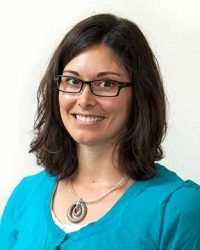
Elizabeth Peacock, an associate professor of anthropology at UWL, underscores the importance of shedding light on the challenges faced by student workers. These issues warrant greater attention and consideration at the classroom and national level.
“Some of academia talks about this issue, but it’s not part of mainstream discourse. We’ve pushed this burden onto the people we’re supposed to be helping,” says Peacock. “It’s been happening in many states, and we are hobbling the next generation.”
While working in college has been shown to have its benefits, like the ability to earn more after graduation and even perform better academically, a tipping point exists where too much work becomes detrimental. Previous research has found that 15 hours per week or more is the threshold where grades start to be negatively impacted by work, notes Paulson. Also, not all work is created equal. Low-income students are more likely to have jobs simply to pay the bills, while higher income students are more likely to find college work aligned with their passions and interests.
Paulson says while working students may feel invisible in their college community, they also struggle with speaking up to make their situation more visible because of cultural norms.
“There is the thought that you need to put your nose to the grindstone… People don’t talk about it because they think it is seen as complaining or that they are not taking advantage of the opportunities they do have,” she says.
Yet, these students are footing an increasingly larger college bill than previous generations as tuition has increased, meaning longer work hours and less time experiencing college life.
“There needs to be more discussion around how not everyone has the same resources. Through this maybe we can find solutions for these students who are falling through the cracks,” says Paulson.
Students surveyed suggested various strategies for meaningful change such as more competitive pay for on-campus jobs or more community partners offering paid internship opportunities, allowing students to work in areas more closely aligned with their degree path.
Paulson is grateful for this research opportunity that aligns with her future goals to go to graduate school. Her undergraduate research experience has solidified her interest in research, helped her connect with others and gain confidence in her abilities. Moreover, it helped her find her place in the UWL community as a working student.
“It opened my eyes to the fact that a lot of other students are in a similar boat as me,” she says noting her working student status. “I feel like in a lot of the national discussion around college students, they are depicted as lazy and asking for handouts. My research has shown me quite the opposite. These students are working hard and working a lot … They want to contribute something to society and are willing to put in astronomical effort to try and do so.”
“She really put in some amazing work, and it shows.”
Written by: The University of Wisconsin – La Crosse; used with permission. Find the original article here
Download the June 2, 2024 CUR eNews here.
In this issue, you’ll find information on

Dr. John Anderson, W.H. Drury Professor of Ecology and Natural History at College of the Atlantic (COA) in Bar Harbor, ME, has been selected as the 2024 Council on Undergraduate Research – Goldwater Scholars Faculty Mentor Awardee. The award gifts $5,000 for the awardee’s undergraduate research program.
Dr. Anderson attributes his career to his mentors and good fortune. As he sees it, he wasn’t an exceptional student, but with luck, he was taken under the wings of mentors who listened to and valued him, saw his potential, and guided him when he most needed it. These formative experiences shaped his philosophy of teaching and mentoring.
Although humble about calling himself a mentor, Dr. Anderson has indeed mentored many successful students and Goldwater Scholars throughout his career. “Listening,” Dr. Anderson said, is critical. Of the more than 100 students he has mentored and listened to, 16 have been recognized by the Goldwater Scholarship Foundation, while many more have gone on to pursue careers in research, academic administration, and public policy.
“I am enormously touched and grateful to receive the award, but honestly I feel that in reality it goes to the amazing students—both past Goldwater awardees and oh so many others—who I have been privileged to work with over these many years,” Dr. Anderson said. “I have been so very lucky that these remarkable young people saw something in what I had to offer and for a brief time allowed me to call myself their teacher.”
According to his students, Dr. Anderson is a committed mentor who inspires excellence, diligence, and confidence. With his experiential approaches in the field and continued listening from start to finish, Dr. Anderson gives all he has to his students, reminding himself that he is not the “main event”— they are. He inspires them to learn from their mistakes and helps them gain the knowledge and confidence to overcome all that is put in their path.
“The CUR-Goldwater Scholars Faculty Mentor Award needed to be created to enable our community to recognize exceptional mentors like John Anderson,” said John Mateja, President of the Goldwater Scholarship Foundation. “John’s mentoring is not about John or his research, it is about helping his students find their passions and career interests.”
Dr. Anderson’s Goldwater nominees, students like Nicole Cabana ’99, the current deputy director of the National Oceanic and Atmospheric Administration’s Woods Hole Lab and a Knauss Fellow, have been bright and dedicated, he said. Students who come early, stay late, ask for extra readings, and come to his office waiving a paper wanting to know why the editor missed an important point. He said he tries not to smile to show his glee as they talk.
“They’ve been willing to take chances, both in terms of intellect and in terms of surf, snow, rain, fog, desert sands, guano, and gull vomit, and somehow they kept their tempers, enhanced their curiosity, and maintained a sense of humor,” Dr. Anderson said.
“Dr. Anderson has modelled exemplary dedication to advancing undergraduate research through mentoring,” said Lindsay Currie, executive officer of CUR. “With his continued listening, his mentoring style, and his overall outlook on mentorship, Dr. Anderson is the definition of a Goldwater Scholars Faculty Mentor, and we are excited to honor him as the 2024 recipient.”
Dr. Anderson credits COA’s embrace of community and place-based, experiential approach to education the successes that so many of his mentees have had. “At COA there is no one mentor for a student, here many faculty contribute to a student’s education and development as a human ecologist,” Dr. Anderson said. “It has been a privilege to be part of all this.”
Download the May 19, 2024 CUR eNews here.
In this issue, you’ll find information on
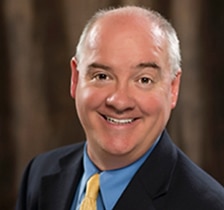
Dr. James T. LaPlant, Dean of the College of Humanities and Social Sciences for Valdosta State University (VSU) (Valdosta, GA), has been elected to serve as president of the Council on Undergraduate Research (CUR) for the membership year 2025-2026. LaPlant will become president-elect on June 1, 2024, taking a seat on CUR’s Board of Directors, and succeeding 2024-2025 CUR president Maria Iacullo-Bird (Pace University) in the summer of 2025.
LaPlant states, “I have been a member of CUR for almost 25 years, and it is a great honor to be a part of the CUR Board of Directors. Mentoring undergraduate research has been the most rewarding part of my career, and my service with CUR has been the most beneficial element of my professional development. I am excited to work with a great team to not only maintain CUR as the national voice of undergraduate research but also to ensure CUR’s leadership in the dynamically changing landscape of higher education.”
LaPlant’s long-term dedication to CUR is evident through his engagement with CUR’s Social Sciences division since its founding, his various leadership roles including chair of the Social Sciences Division from 2012-2014, and Editor-in-Chief (EIC) of the CUR Quarterly (2014-2017) and Scholarship and Practice of Undergraduate Research Journal (SPUR) (2017-2021). His guidance has helped raise the profile of CUR’s journal, expanding its reach by increasing the databases in which the journal was indexed, its inclusion of all disciplines and international perspectives, and its continued technological transformation.
Outside of CUR, LaPlant’s academic career consists of various experiences that will be applied to his position as president-elect in 2024. Mentoring over 100 undergraduate research students, his prior experience serving as a board member of the Georgia Political Science Association (GPSA) from 2003-2010, and his various professional experience as dean and professor, will contribute to his goal of overcoming the challenges of developing and growing undergraduate research programs with shrinking resources. His overall embodiment of the changing landscape will continue to help excel CUR membership now and in the future.
“Having Dr. LaPlant on the CUR Board of Directors is extremely positive for our students and faculty,” explains Dr. Sheri Noviello, Interim Provost and Vice President for Academic Affairs for VSU. “Undergraduate research has been a vital part of the VSU campus for many years. Dr. LaPlant has been instrumental in helping to establish this focus across the campus and in creating the annual VSU Undergraduate Research Symposium. He is a continuous voice of support for experiential learning which contributes to a quality educational experience for our students.”
Lindsay Currie, CUR executive officer, explains: “Having collaborated with Dr. LaPlant for over a decade, I’ve witnessed firsthand his unwavering dedication to the undergraduate research community. His forward-thinking approach and commitment to excellence have been instrumental in shaping CUR’s evolution as a leader in the field. As an experienced administrator, James has demonstrated a unique ability to innovate programs and services, ensuring their relevance and effectiveness for students. I am excited to continue our partnership and confident that under James’s leadership, CUR will continue to thrive and inspire positive change in the undergraduate research landscape.”